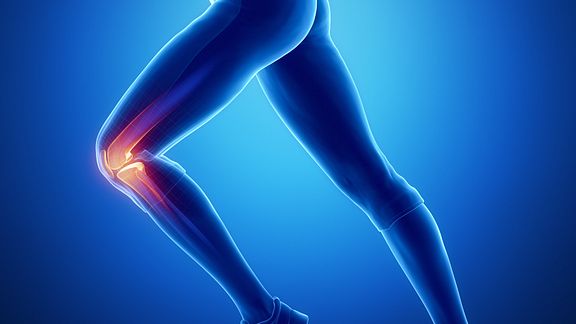If pain, swelling, and soreness develop below a young athlete’s knee, Osgood-Schlatter disease may be the reason. Even though many people have never heard of it, Osgood-Schlatter disease affects as many as 21% of adolescent athletes.1
Osgood-Schlatter disease typically causes tenderness and swelling in the area below the knee after an activity that involves running or jumping or squatting.
Experiencing Osgood-Schlatter disease
Osgood-Schlatter disease typically develops in people who:
- Are between the ages of 8 and 15
- Lead active lifestyles and/or participate in athletics
- Are undergoing a growth spurt
People with this condition exhibit tenderness and swelling in the area below the knee, near the top of the shin, after doing an activity that involves running or jumping or squatting. Typically the pain goes away with rest.
Osgood-Schlatter disease is thought to be caused by the forceful contractions of the tendons and muscles around the knee, causing tiny fractures that lead to inflammation and pain. The body often responds by creating more bone, which results in a bump that forms under the knee.
See Soft Tissue of the Knee Joint advertisement
Diagnosing Osgood-Schlatter disease
A diagnosis of Osgood-Schlatter disease is often made by a doctor reviewing the patient’s history and performing a physical examination.
Diagnostic imaging, such as an x-ray, ultrasound, MRI, or CT scan, may be ordered to further inspect the site of the pain.
Treating Osgood-Schlatter disease
When treating Osgood-Schlatter disease, a doctor might recommend the patient:
- Apply ice as needed. As much as a few times a day, no more than 20 minutes a time, and always with a protective barrier to protect the skin. This simple action can keep the swelling down and ease the pain.
- Limit physical activities. Rest from repetitive movements like running and jumping until the pain subsides. If symptoms appear during a sport’s season, the patient (and the patient’s parent or guardian, if applicable) can discuss with the doctor what level of participation is advisable.
- Consider taking NSAIDs. Nonsteroidal anti-inflammatory drugs, such as ibuprofen or naproxen, may help to reduce pain and swelling. Talk to a doctor or pharmacist before use, and follow the label’s directions.
- Wear a knee sleeve or knee band. Wearing a compression sleeve or band/strap applies gentle pressure on the knee, which may help to relieve pain and ease swelling.
- Do physical therapy. Once the pain subsides, perform exercises that stretch and strengthen the quadriceps and the surrounding muscles. This can provide relief and protect the knee from further injury.
About 90% of people affected by Osgood-Schlatter disease find that their symptoms resolve within a year or two.2 For nearly 10% of patients, however, symptoms persist well into adulthood. In the most severe cases, surgery may be considered.

